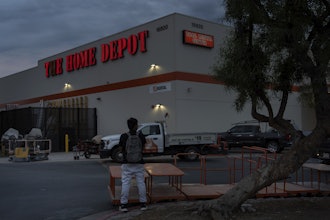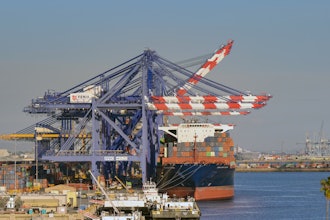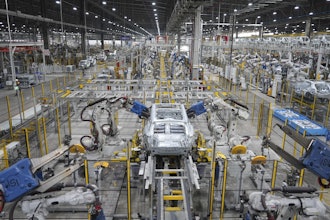Industrial Distribution talked with companies about the issues manufacturers are dealing with in regards to Supply Chain Management and implementing a new platform solution in this 2-part Q&A roundtable discussion.
Part 1 can be read by clicking here.
Industrial Distribution: How long does it take for a company to start seeing the results they are looking for from implementation?
Prashant Bhatia, Vice President of Industry Strategies, JDA Software: Manufacturers can take a segmented approach to supply chain implementations that is best suited to their business needs, budgets and time constraints. For many manufacturers, depending on the solution implemented, they can see results immediately; and begin to generate ROI and enterprise-wide value as quickly as three to four months.
Given the accelerated speed to value for many supply chain investments, manufacturers that deploy the right solutions in the right sequence can realize a return on investment from their current supply chain projects to help fund future supply chain initiatives.
Adam Kline, Product Management Director, Manhattan Associates: Many customers begin seeing ROI on day 1 post system implementation. This greatly depends on what they are coming from. Results will be extremely quick to appear when moving from a manual process to an automated solution driven by supply chain software. Replacing a legacy system in favor of a new, best of breed may also offer quick improvements, but perhaps not as dramatic.
ID: What are some critical questions companies should ask when looking to invest in a supply chain platform?
Bhatia: When partnering with a supply chain solution provider, a manufacturer should seek providers that have deep domain expertise in their industry, offering proof points from similar implementations they’ve conducted, repeatedly achieving or surpassing the project’s agreed upon results and ROI.
Additionally, manufacturers need to look beyond just the solution(s) they are currently assessing and identify supply chain providers that offer a broad platform of best-of-breed supply chain solutions. Although your organization might not be implementing an entire supply chain platform in one fell swoop, it’s imperative to think long-term and partner with a supply chain provider that has a world-class offering of end-to-end solutions, as well as software delivery models that are flexible and can grow with your business, such as cloud.
And lastly, as cited earlier, the people involved in an implementation are just as vital to its success as the software. Choose providers that have a strong commitment to their services organization and employ experts entrenched in your industry who are familiar with your specific business challenges.
Dan Radunz, Senior Vice President of Product Strategy and Development, HighJump: Be sure to understand the true total cost of ownership over the estimated life of the system (for example, a warehouse management system is typically 8-12 years). How easy is it to make system modifications? How are upgrades handled? What is the typical cost for an upgrade? Can the system support your business as your volumes grow and requirements change? Is the vendor investing in R&D to enhance the product over the long-term?
Here’s what to look for in an ideal solution.
- Fits your functional business requirements today
- Addresses core business issues
- Easily integrates with existing systems
- Rapidly and cost-effectively responds to change
- Meets ever-increasing customer demands
- Builds competitive advantage
- Leverages technological advances
Kline: What are my goals? What problem (or collection of problems) is most important for me to solve – managing labor costs, driving transportation efficiencies, juggling inventory availability from multiple sources, enabling automation within a DC, etc…? What assumptions in place today cannot change? How flexible can my business be to absorbing new operational procedures? When do I expect my investment to pay off? How will my customers be affected by the change? How do I differentiate myself from my competition moving forward?
ID: How does your platform help manufacturers understand their role within the supply chain and keep goods flowing through better visibility and delivery times?
Bhatia: With approximately 4,500 employees and a broad footprint of best-of-breed, end-to-end supply chain solutions, JDA has domain knowledge that extends from best practices for manufacturing processes to understanding the needs and requirements of our customers’ customers on a global scale.
JDA’s supply chain solutions help manufacturers manage the flow of goods from raw materials to finished products through any channel. With deep industry expertise and an innovative cloud platform, JDA helps manufacturers optimize inventory, labor and customer service levels.
Radunz: HighJump’s solutions provide visibility to both processes and inventory through Web portals and dashboards that can be collaborative with suppliers and customers. The connectivity between trading partners across complex, multi-tiered supply networks is a lot more complicated than simply getting one computer to share data with another. In this case, HighJump helps companies with collaboration and real-time data sharing between supply chain partners.
In addition, HighJump’s Performance Advantage solution combines graphical dashboarding technology with industry-specific standards, as well as a company’s current data. This informs the real-time tracking of information and trends, including details on inventory levels, dock-to-stock hours, suppliers on-time, percentage of supplier orders received undamaged, fill rate percent, order fill rate, line fill rate, on-time and ready to ship, and more. A customer can also build and incorporate its own company-specific KPIs, and drill down to perform root cause analysis when a KPI is falling below expectations.
All of this helps manufacturers know when and where inventory is and enables them to develop the best plan for production by building only what is required for shipments. In a demand-driven world, real-time and actionable intelligence is required to make timely and effective decisions.
Kline: A manufacturer’s role in the supply chain is changing. It used to be good enough to build more of an item than known demand, keeping the extra inventory as a buffer to ensure the ability to meet future demand. Inventory, however, is expensive and manufacturers must look to drive a leaner, lower cost supply chain with specific concentration on customer service.
Where focus was once solely on warehouse and plant operations, which certainly continues to play an critical role, manufacturers must now take a broader perspective on their supply chains that includes vigilant management of the transportation component, seeking optimal movements for each shipment. The opportunity for manufacturers doesn’t stop there, however. They need something to help optimize both the warehousing and transportation pieces.
A yard management solution, working closely with warehouse management and transportation management, can drive additional efficiencies such as better utilized labor at the receiving and loading docks due to continuous delivery of trailers and better carrier selection decisions based on on-yard trailer inventory levels. Adding visibility into trailer/equipment availability, shipment lead times, and transit times to a robust manufacturing policy, that includes same day building and shipping of goods, results in a lean supply chain positioning the manufacturer to better meet its customer’s demands.






















